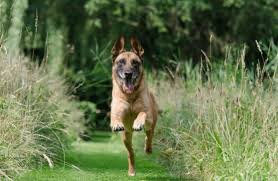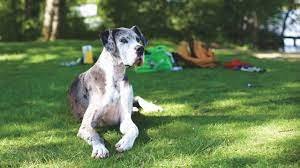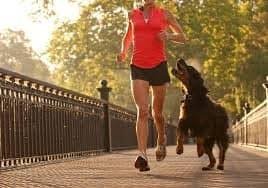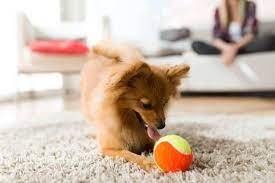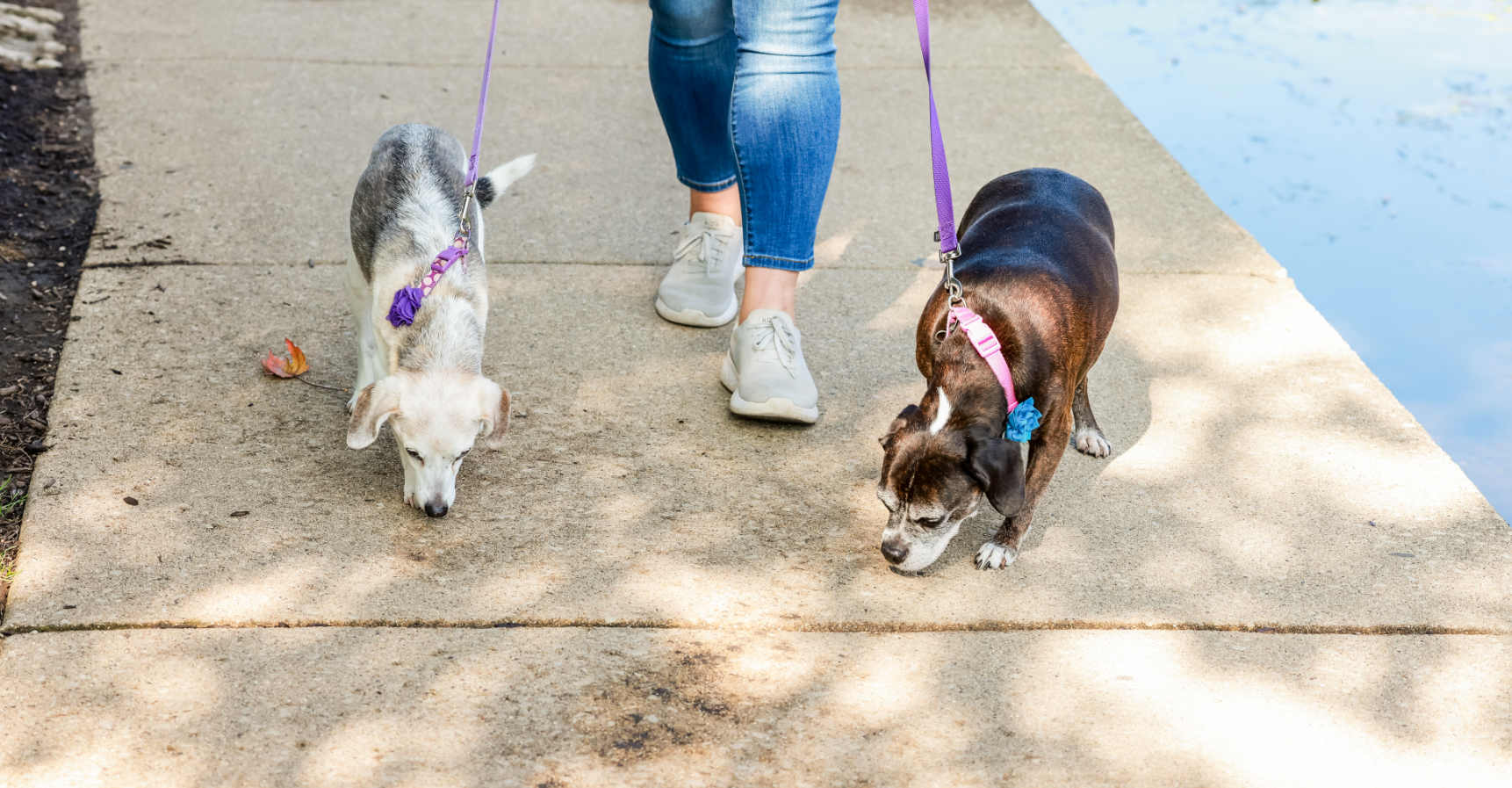
Blog
Asking For A Fur-Friend
Unleashing Happiness: The Many Benefits of Hiring a Dog Walker
For many dog owners, the joy of having a furry companion comes with the responsibility of ensuring their well-being and happiness. Regular exercise is a crucial component of a dog's overall health, and while pet owners often lead busy lives, providing the necessary physical activity for their canine friends can be challenging. This is where the invaluable service of a dog walker comes into play. In this blog post, we'll explore the numerous benefits of hiring a dog walker and how it contributes to a healthier, happier life for both pets and their owners.
For many dog owners, the joy of having a furry companion comes with the responsibility of ensuring their well-being and happiness. Regular exercise is a crucial component of a dog's overall health, and while pet owners often lead busy lives, providing the necessary physical activity for their canine friends can be challenging. This is where the invaluable service of a dog walker comes into play. In this blog post, we'll explore the numerous benefits of hiring a dog walker and how it contributes to a healthier, happier life for both pets and their owners.
Physical Exercise
Dogs are active creatures that thrive on regular exercise. Daily walks not only help maintain a healthy weight but also contribute to better cardiovascular health, improved muscle tone, and enhanced joint flexibility. A professional dog walker ensures that your furry friend receives the exercise they need, even on days when your schedule is packed.
Mental Stimulation
In addition to physical activity, dogs require mental stimulation to stay sharp and engaged. A change of scenery, encountering new smells, and interacting with other dogs during a walk provide valuable mental stimulation. A bored dog may exhibit destructive behavior, but regular walks with a dog walker can help prevent this by keeping their minds engaged and satisfied.
Socialization
Socialization is a vital aspect of a dog's development. Regular exposure to different environments, people, and other dogs helps prevent behavioral issues, fear, and aggression. Dog walkers create opportunities for your furry friend to interact with their surroundings, ensuring they become well-adjusted, sociable pets.
Alleviating Boredom and Loneliness
Dogs are social animals that thrive on companionship. When left alone for extended periods, they may experience boredom and loneliness, leading to anxiety or even depression. Hiring a dog walker ensures that your pet receives attention and companionship, breaking up the monotony of their day and keeping them emotionally fulfilled.
Consistent Routine
Dogs thrive on routine, and regular walks provide a sense of predictability and stability in their lives. A professional dog walker can help establish and maintain a consistent walking schedule, which contributes to a calmer and more balanced temperament in your furry friend.
Health Monitoring
Experienced dog walkers are often attuned to the health and well-being of the dogs in their care. Regular interaction allows them to notice any changes in behavior, mobility issues, or signs of illness. Early detection of health concerns can lead to prompt veterinary care, potentially preventing more serious issues down the line.
Hiring a dog walker is not just a convenience for busy pet owners; it's a valuable investment in the overall well-being of our four-legged friends. From physical exercise to mental stimulation, socialization, and emotional fulfillment, the benefits of a professional dog walker extend far beyond a simple stroll around the block. So, unleash the happiness in your dog's life by considering the services of a dedicated and reliable dog walker. Your pet will thank you with wagging tails and boundless enthusiasm!
If you and your pup are considering a dog walker, our amazing staff would love to help. Give us a call at 847.802.9538 or contact us to set up your free meet and greet.
Exercising A Large Breed Puppy
Bringing a puppy home can be like installing a backup generator on full power - they just have so much energy! We all know that puppies need plenty of mental and physical stimulation, not only for their development, but to keep them from finding destructive behaviors that can be sometimes hard to break.
Bringing a puppy home can be like installing a backup generator on full power - they just have so much energy! We all know that puppies need plenty of mental and physical stimulation, not only for their development, but to keep them from finding destructive behaviors that can be sometimes hard to break. Let’s dive in.
How much puppy exercise is too much for large breeds?
We all know that large breed dogs are prone to joint problems and with this knowledge we need to make sure we are not over exercising our puppies. In spite of their shorter lifespan and quick growth, large dogs take a long time to fully develop. The younger they are, the shorter your exercise time should be. Even if your four month old German Shepard is more than happy to keep up with you on a long hike, you should save that kind of exercise until they are older. Because large breeds do not fully develop until about 15 months, you won’t want to start any activities like agility early. Any strain on underdeveloped joints can lead to bigger problems in the future. You should let your puppy nap when they feel like it. Shorter bursts of exercise will give them the chance to rest when their body tells them it’s time.
Tips for safe large puppy exercise.
There are a few things you can begin to teach your puppy and that you should bear in mind as you learn how much and how often your puppy needs exercise. The first is to teach your pup how to walk on a leash. In the beginning, puppies tend to see leashes as toys and may enjoy trying to nip them on walks. Keep their attention away from the leash and on you by carrying treats and working on skills such as sitting throughout the first several walks. Over time, they will get used to the leash and become better at walking with it. You have to also keep in mind timing and how long you are walking with your puppy. Start with short, slow walks and work your way up to longer walks. Do not begin jogging with your pup until they are least six months old and keep the jogs short until they are at least 15 months old. You also want to be aware of the weather and temperature outside. Keep your puppy walks away from the hottest parts and coldest parts of the day. Puppy pads can be very sensitive so walking on pavement when it is too hot or too cold can cause injury to your pup.
Types of puppy exercise to try.
We have mentioned walking and running, which are great forms of exercise for you and your pup. However, there are plenty of other ways to get your puppy moving and active that will let your puppy play and wear them out without causing stress and strain on their growing bodies.
Playing with toys - We all know that puppies love to chew, tug and tackle. Toys are a great way to hold their attention, expend some energy and even show them what is okay to chew on. Keep in mind that puppies have their baby teeth that will finish growing in about six weeks and they will begin to lose their baby teeth at about three months of age. By six months your pup will have their adult teeth, but until then you should stick to toys that are designed for teething. Fetch is a great way to play with your pup. However, if they decide to sit and chew on their toy and not bring it back they may be telling you they are ready for a break in play. Tug-o-war is also an okay activity for puppies, but you need to be mindful of their puppy teeth. They are going to fall out eventually but that does not mean they should be yanked out prematurely. Let your puppy do the tugging while you sit back and hold the toy firmly in one place. No matter what play you engage your pup in, play should last for no more than ten minutes at a time to give you pup time to rest and recoup.
Obedience training - Learning how to sit and stay may not be high-impact exercise, but it still involves activity and it is great for mental stimulation for your pup. Work on basic commands for no more than ten minutes at a time. Change up the space you use for training as your pup learns more tricks. Move about your home and yard and test their ability to focus despite all the distractions that may arise. Mixing low-impact activities with your pup's more vigorous play can increase the amount of time they are active without doing too much too quickly.
Exercise combined with mental stimulation - While we are quick to assume bad puppy behavior is from having too much energy, it can also arise when our pups are bored and looking for something to do. In addition to physically stimulating activities, we should also be engaging our pups in mental stimulation. Scent games are great to get your puppy moving as well as using their brains. Use treat toys that they are drawn to and hide them around your home or yard and let them sniff out the location. Doing this a few times during the day will keep your pup interested and will wear them out.
How much exercise and how often?
While there is no one size fits all for this question, understanding how much sleep your puppy needs will help you gauge how much play they may require. On average, puppies sleep about 18-20 hours per day. Bigger breeds tend to sleep more than smaller breeds, so do not be surprised if your Great Dane only gives you four to six waking hours per day. Of the hours your puppy is awake, only a fraction of them should be spent on exercise. For puppies six months or younger, plan on two to three high-impact play sessions lasting no more than ten minutes each. Work in one or two mentally stimulating activities into your pup’s day that should also only last about ten minutes each as well. As your puppy gets older, you can gradually increase their play time especially for walks. By the time your pup is about one year old a 30-45 minute walk should be okay for them to take part of.
I hope these ideas help you and your new pup begin to form a wonderful bond and relationship. The best thing to remember is that when a puppy displays bad behavior, consider that they may be bored and need something to keep them occupied to avoid those behaviors.
10 Ways to Engage Your Dog Indoors
With winter - or at least colder weather coming, it is necessary for us as pet owners to keep our dog physically healthy and active through the cooler months. It can be hard to continue to get creative with different activities for your pup as well as keeping up with doing these activities. Well, keeping your pup active and interested in what they are doing can help remedy some of the challenges.
With winter - or at least colder weather coming, it is necessary for us as pet owners to keep our dog physically healthy and active through the cooler months. It can be hard to continue to get creative with different activities for your pup as well as keeping up with doing these activities. Well, keeping your pup active and interested in what they are doing can help remedy some of the challenges.
So, here are 10 ways to engage your dog indoors.
Hidden Treats
Hiding treats can be synonymous with hide and seek. Treats can be concealed in different places around your home such as under pillows, in baskets, and in multiple rooms in your home. This game can also help keep your pooch’s nose abilities sharp as they hunt for food. This can especially be a fun activity for hunting dogs such as Spaniels, Terriers or Beagles. Along with hiding your pup’s regular treats or kibble, add a high value treat in the mix to ensure your pup remains interested in searching for the hidden treats. It can be a good idea to have a variety of treats of different flavors that your pet will be excited for. The best part about this game is being able to control the hiding spots and even difficulty of the challenge for your pet. Always make sure to switch up hiding spots or your pup will outsmart you and know exactly where the treats will be each time thus eliminating the benefits it has for nose work. You can also increase the difficulty by hiding treats in places your pet may have to work for. For a harder challenge, teach your pet to alert when they have found the treats. Teach them to sit and bark once when they have found the treat. After they do, always reward with head rubs, lots of ‘good dog’ and of course the treats. This can be made more difficult by hiding treats in a closet or behind a closed door and teaching your pup to alert at the door.
Hide and Seek
We touched a bit of this with hidden treats, but joining in on the fun with your dog can help to facilitate a stronger bond between you and your pup. Plus if you have children, this can not only be great bonding for them, but also it can keep your children occupied for some time too! Get your dog to sit and stay, get help from a human if they do not know how to stay yet, then go and hide. After finding your hiding spot, call your dog to come and find you. Always remember when your pup finds you, be very enthusiastic and reward them with praise and lots of head rubs. Also, make sure to change your hiding spots. One of my favorite places is behind a door. My pup smells me, but it increases the difficulty when they have to actually look behind the door and not just in a particular room. If you are excited, your pup will match your excitement. This will also help keep your dog engaged in the play.
Practice Obedience Training
While this should be done daily, getting a few sessions of obedience training or even one in a week is great to keep your pup in tip top shape with their skills as well as added mental stimulation to your dog’s day. Always use positive reinforcement and go over the commands and skills your pet already knows to start. Always switch up the order of the skills you are practicing or you will end up like me and my dog. I always start with ‘sit’ and she then automatically goes into her ‘lay down’ then ‘sit’ again before going into her extended stay stance. It’s cute, but I did not know what I know now, and it is hard to get her to break this routine after 14 years. When working on your pup’s skills, do not spend too much time with it. You do not want your pet to become bored of being asked to do the same thing over and over since this may cause your pet to become disinterested. Once your pet has their basic commands down, try introducing new ones such as ‘high five’ or teach your pet to do nose touches with your hands. Most activities can be adjusted based on your pup’s skill level.
Teach Your Dog A New Trick
Whoever says you can’t teach an old dog new tricks may be wrong. You can definitely teach your dog tricks at any age as long as you keep the dog excited and interested in what you are teaching them. Try teaching your pet to shake, learn the name of their favorite toy or even to army crawl under a chair. The possibilities are endless! One of my favorite tricks is to clean up. You can do this by teaching them what ‘clean up’ or ‘put it away’ means, by getting them to pick up a toy and carry it over to the toy box and drop it. The easiest way is to break it down step by step, slowly adding another step as they master the previous one. You can progress to scattering toys all over and pointing to them, or take it a step further and teach your pup the name of each of their toys. Another fun trick or more of a game is the shell game, or as I learned it growing up, follow the ball. Place a treat under an upside down cup next to a few other cups and move them around, pseudo having your pup follow the cup the treats are under. It is a fun parlor trick when your pup picks the right cup!
Create an Indoor Obstacle Course
If you have enough space, or even if you are able to move a coffee table out of the way in a living room, you can set up an obstacle course for your four legged friend. This can get as elaborate or as simple as you have the space for. Agility can be a great way to exercise your pup physically and mentally and offer enrichment. You can teach your pet the basics of agility by jumping over small boxes, weaving through tables or stacks of books and laying down on a blanket or their bed as the grand finale. This is another activity that is great if you have children. They will have fun building, moving and creating new obstacles for your pup. Kids play tunnels and tents can make for great obstacles as well. Obstacle courses can be tailored to the size of your pup as well. Anything your pup can weave through, jump up on to or over will make this activity fun for everyone.
Tug-of-War
Tug of war can be a great activity, especially if you have a small space. This activity will not make your dog hostile, but it will bring smiles to your face seeing your pet having so much fun with their human family members. This game is simple, but it can really tire your pup out. This is a great way for your dog to get out some extra energy. Always be cautious of things around your home that may be breakable since this game can sometimes get a bit rowdy.
Food Toys
One of the biggest struggles for pet parents who work from home is keeping your dog occupied while you are working. Food toys can be a great way to keep your pet entertained while you work or even while you are binging your favorite TV show. Toys that dispense food are fun and motivating for pups who are food motivated. It is as easy as putting some treats in a toy and walking away. There are toy dispensers that demand the dog push, pull, rotate or dig for their reward. Some toys such as Kongs can keep your pet occupied for a long time. Try freezing a Kong or hollowed out bone with tasty treats; you can even add broth, peanut butter, canned pumpkin or mashed bananas. That will surely make your pup a happy dog and it will last longer when frozen.
Fetching
Fetch does not just have to be an outdoor activity. There are other toys you can use other than balls that your pup can chase after and bring back to you. My dog, Sassy, loves toys that have no stuffing. She will chase and bring them back all day long! Considering a softer toy can also be a good idea when playing fetch indoors; it may save a lamp or two! Hallways are ideal for this game. They tend to be long and can be a place away from breakable objects in your home. Bouncing a ball off the walls of the hallway can also give your pet the excitement of more of a chase too!
Rotate Your Dogs Toys
Dogs love ‘new things’. Just as we get excited about something new, they do too! However, to them something new can be something they have not seen in a while. Rotating toys helps so your pup does not get bored with the toys they have available to them and make the toys that are available seem much more interesting. Stash some of your dog's toys in a cupboard or closet and swap them out with other toys every few weeks. This helps to keep the wow factor and your pet will be so excited for a new toy. They won;’t miss the ones that you now are about to put away. If your pet has a toy they use as a security blanket, do not add that toy into rotation. You do not want to stress your dog out by hiding their favorite soothing toy from them for weeks on end.
Use Pet Training Equipment
Just like humans, pets have their set of training aids. Scientists are starting to learn that training equipment may play a crucial role in a dog’s well-being. Agility tunnels and even treadmills are the most popular dog training pieces of equipment. You need to work with your pup before they are able to use a treadmill for exercise and you must listen to your pet if they don’t progress. If this happens, it may be time to switch gears and find something that your dog will enjoy. Once your pet gets used to training equipment, it can be a great time for your pet! Know that some of these items can be pricey and can take up a lot of space in your home.
If you have a dog, you know when boredom sets in is when your pup is more likely to find themselves getting in trouble. Dogs need a good balance of physical and mental play and stimulation. Playing with your pup may ward off destructive behaviors like excessive barking or finding non-toy items to chew on. Staying indoors does not have to be boring; as we talked about there are many ways to have fun with your pup and keep them engaged. I hope these ideas will give you some inspiration for new ways to play with your pet while indoors!



